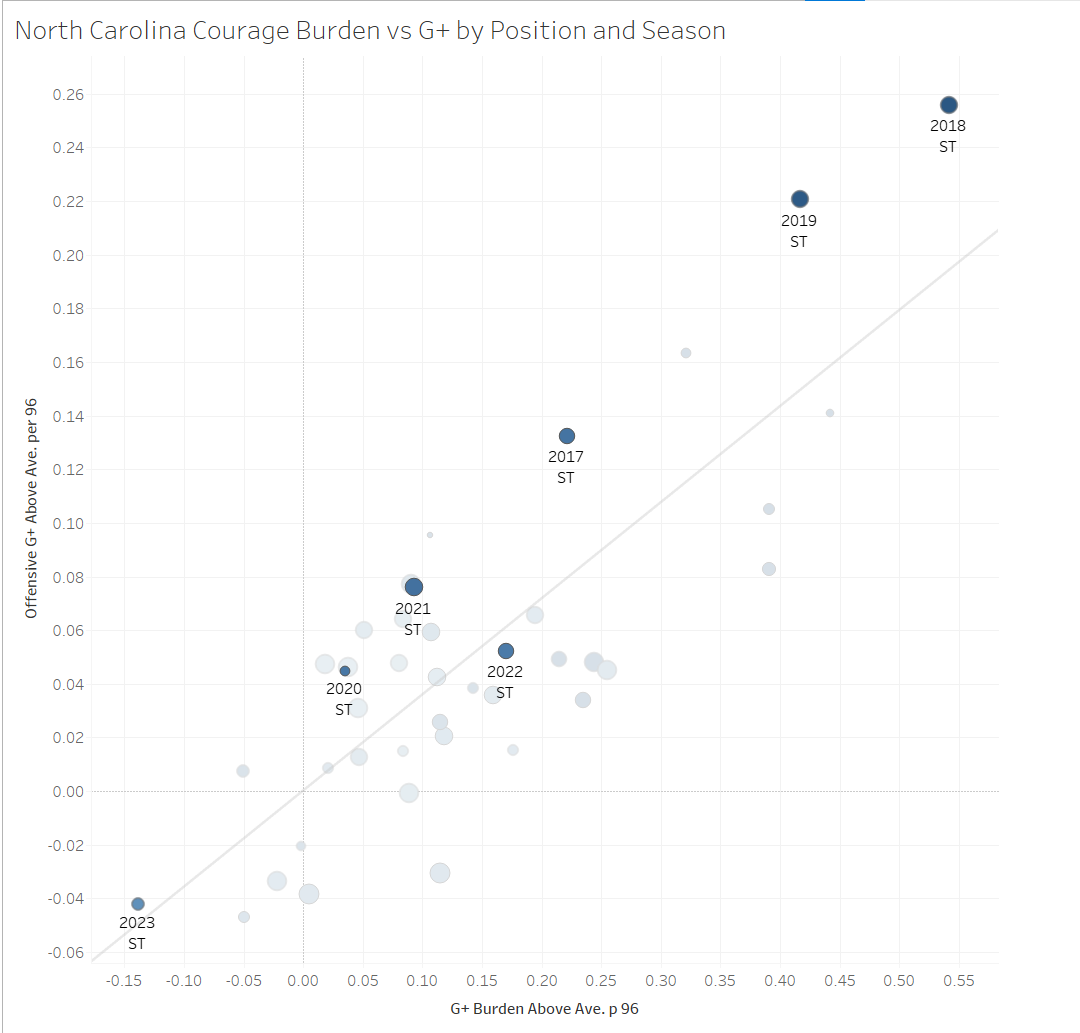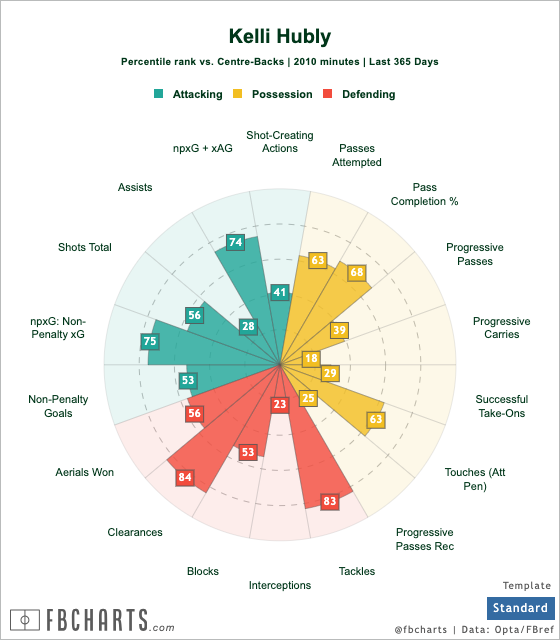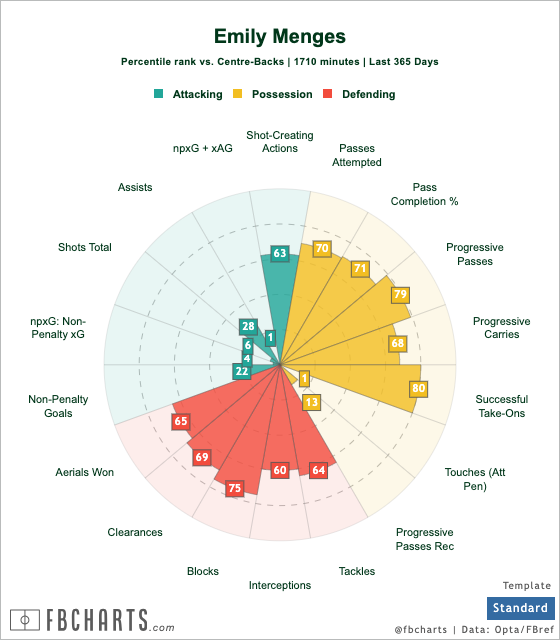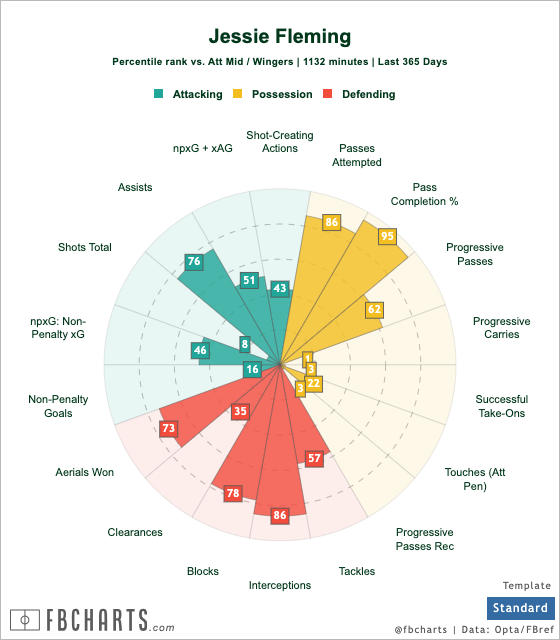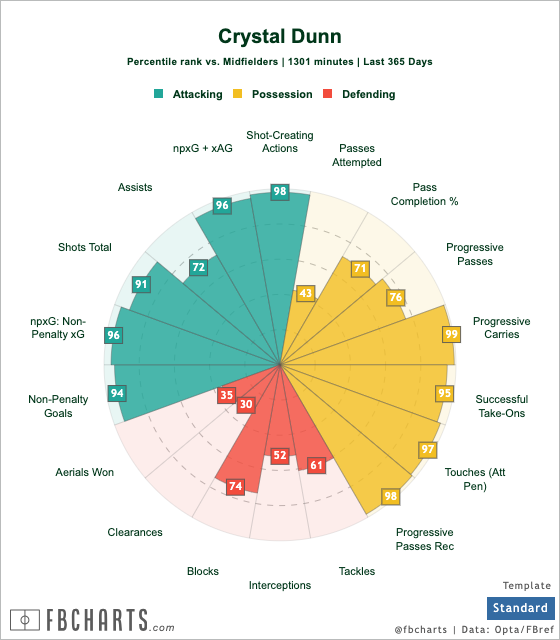2024 NWSL Season Previews: North Carolina Courage and Portland Thorns
/We’re releasing team previews ahead of the NWSL season that kicks off on Saturday, March 16! Our penultimate edition covers the North Carolina Courage and Portland Thorns. You can find all of our season previews here!
Sweet Kerolin
The Courage had a much better season than anyone predicted last year, and were more than happy to point that out as the table took shape towards the end. The last season had marked the gradual transition away from the legends that had made the Courage the team to beat in the late 2010s, and in the beginning of the season had essentially completed that conversion. Manager Sean Nahas had firmly decided the direction and makeup of his team, and in many ways it was the first group that was entirely his.
In some ways the success justified the changes, and although last year was a weird year with the World Cup in the middle and the changes to Challenge Cup (a competition that North Carolina would win, for the second time, in its last year as a real tournament). Despite that success there are a number of questions remaining for the Courage and problems that need to be solved in advance of the 2024 season.
Possession Heavy Systems, Goals Added, and the Doldrums
One of the biggest changes the Courage have seen in the changeover to Nahas is a rapidly shifting approach to possession and play on the ball. The Courage of old were aggressive, attacking from the first whistle and trying to create as many transition moments as possible through a heavy press and a relentless and risky attack designed to create chances immediately, or just surrender the ball to try again. Of the 15 teams in NWSL history with the lowest xPass in the Final Third (a measure of risk) 5 were the previous manager’s WNY or NC Courage teams.
Nahas’ tenure has marked a hard shift away from this philosophy, veering into the other extreme of lower risk and more considered possession play. His 2023 NC Courage team had the highest xPass in NWSL history, both overall and in the final third. The slow and cautious play has had a number of knock on effects in how the team has performed over time.
(h/t Evan Davis for the graph)
First, it should be noted that G+ does not generally score this style of play very highly. To veer into the philosophical for a moment, the difference in value observed by G+ for high possession/low risk systems and the value placed on them by the people who discuss the league (pundits, coaches, average fans, etc) is probably as stark as it gets. There’s a perceived value to holding on to the ball that isn’t quite backed up by the numbers.
It makes sense; from a numerical point of view the difference between expected possession value from a sideways pass outside the box is generally fairly small. Stringing together a few more passes, even hundreds over the course of a game, is hard to value when it takes an opponent just a few to score (and most scoring possessions don’t last much more than a few passes). Therefore the benefit of theoretically shortening the game for the opponent and limiting their possession doesn’t just add up if a team can’t defend.
High possession/low risk teams do tend to allow fewer chances than other teams over the long haul, but it comes at a cost. That cost is slower, more burdensome attacking play and a global drop in overall chances scored. When the speed of play lowers, that means that defenses have more time to get set and have bodies in the box. This is the doldrums of possession play, which many very talented and very good teams find them in for seasons at a time. It’s marked by broadly negative field tilt, with the ball spending far too much time in the defensive or middle thirds. Chances are hard to come by as possessions stretch longer and longer to find that perfect breakthrough. It takes just one thing going wrong - maybe a breakdown defensively where opponents get an easy transition, or maybe a player with an itchy shooting foot that wastes possession after possession on no-hopers, maybe just nobody wants to shoot - and a team expected to finish at the top slides its way to the bottom.
The breakneck speed of the old Courage helped prevent that defensive solidity, which is why they put up the best attacking numbers the league has ever seen. For the new Courage, their xG per game was the lowest its been in the history of the club. Things look even more bleak with the devastating knee injury to their talisman and NWSL MVP, Kerolin.
Kerolin - the Make or Break Player
It’s unclear whether or not Kerolin will have a part to play this season. Knee injuries can be career changing and the comebacks for players with similar injuries have taken years. Even if she is able to return to play, who knows if she’s going to be the same electric player that took over games in 2023?
Along with being the MVP, she held the most G+ Burden of any player in NWSL last year. The entire offense flowed through her, and it worked. Without her, the Courage have a long way to go.
Notably, they have a pretty concerning issue at striker. Striker play was always a strength for the Courage, from the days of Jessica McDonald and Lynn Williams and even in 2022 with Diana Ordonez’ rookie campaign. This season, Courage strikers posted the lowest G+ burden in team history. They contributed less to the attack and produced fewer goals than ever before. There’s not a clear goal scorer on the roster with Kerolin out. Tess Boade was not productive last year and while Hailey Hopkins and Olivia Wingate showed flashes, it’s hard to pencil them in as full time starters. For the Courage to win games, they need to make up Kerolin’s goal production with the front line.
Big Additions - BSG and Ashley Sanchez
The Courage did make two major acquisitions this year. Ashley Sanchez has been one of the leading wingers in the league, and Bianca St Georges did a ton of hard work on a woeful Chicago Red Stars side.
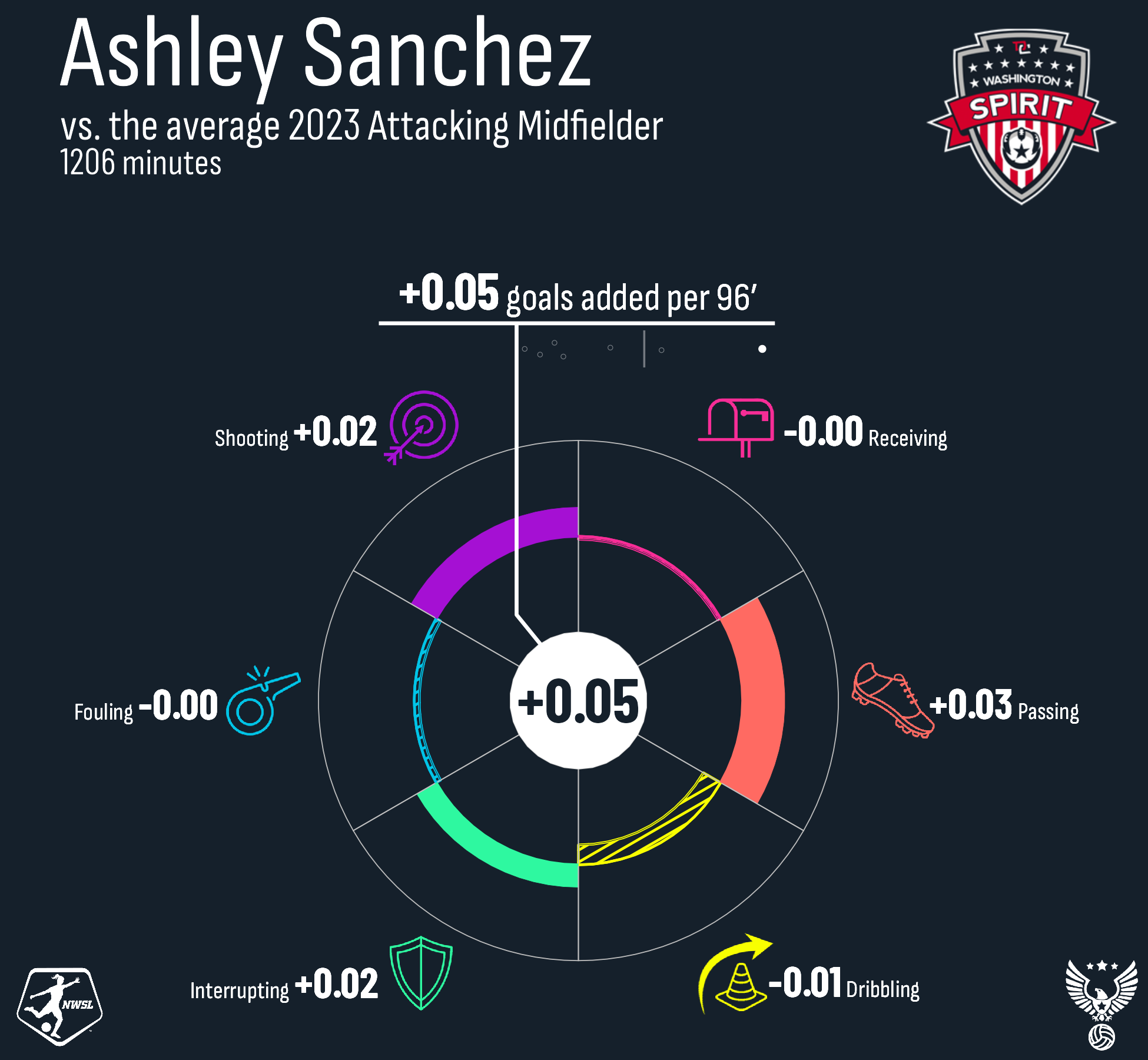
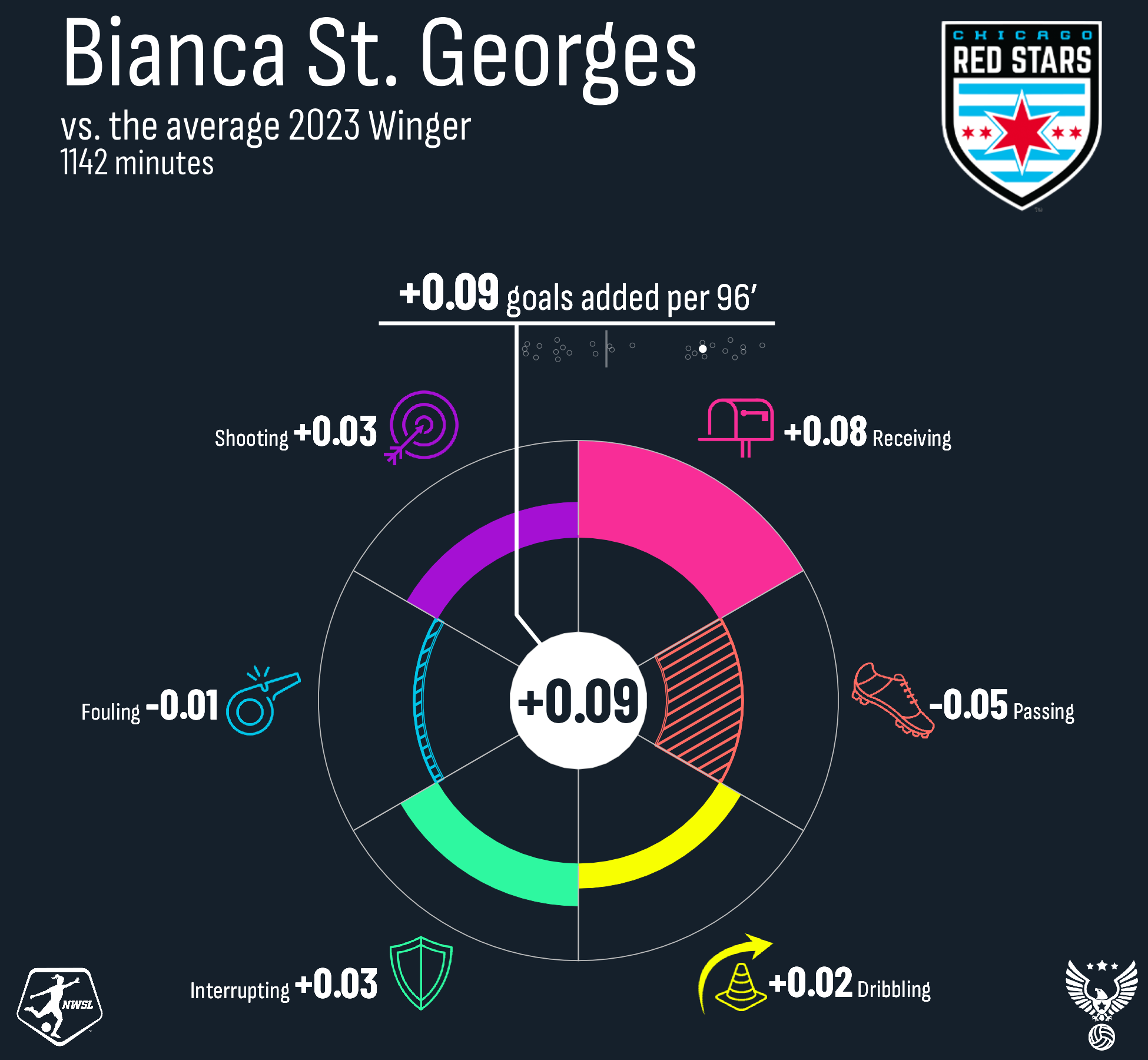
The question is whether or not they will be enough to change the fortunes of the team. They both have tremendous talent, and should be able to fit into a roster that doesn’t have anything close to that level of chance creators currently fit to play.
Season Outlook
I haven’t written much about North Carolina’s defensive line, and it’s not because they aren’t up to par. In fact, the defensive line along with Denise O’Sullivan are one of the best groups in the league. The fact that they can support a high possession side and still be able to manage defensively when that possession breaks down is something that is going to keep the Courage in games throughout the season.
It’s just that in order for this team to compete for titles, it’s not enough for the defense to be excellent. There has to be a path to high efficiency chance creation. Whether it’s a system adjustment where the risk taking is dialed up, or an individual player that can take over and create chances on her own, the Courage have to find goals.
The Courage were playing absolutely beautiful soccer late in 2023 until their loss to eventual champs Gotham. If they can catch that lightning in a bottle again, and sustain it until the return of Kerolin, they might be favored to beat just about anyone.
Portlanada: We Stand On Guard For Thee
In 2023, the Portland Thorns were polar opposites on each end of the field. Starting with the positives, they had one of the best – if not the best – attacks in the league. In the regular season, they generated a league-high 37.5 expected goals and scored 12 more goals than any other team (42). On the other hand, though, Portland had a defensive unit that may have rivaled the Chicagos of the NWSL. They allowed 30 goals on 26.45 expected goals against, which was third-worst of all teams.
The Thorns’ subpar defense ultimately led to the regular-season crown slipping through their fingers on the last match day of the season again, only this time it was thanks to an embarrassing 5-1 loss at home to an Angel City team that was on the outside of the playoff picture looking in. Regardless, Portland secured the No. 2 spot in the standings and hosted eventual champions NJ/NY Gotham FC for the semifinals, where they crashed out of the playoffs in overtime. That said, there was no postseason redemption arc for the Thorns last season. They didn’t even have a shot at defending their championship title.
Are the Thorns ready to leave their 2023 shortcomings behind?
Question marks in goal
Last season, Portland’s No. 1 – Bella Bixby – was downright awful. She was the third-worst starting goalkeeper in the league by goals added in 2023, only behind Chicago’s Alyssa Naeher and Kansas City’s AD Franch, largely because of an abysmal -0.14 shot stopping goals added value. Though goalkeeping statistics are inherently noisy, it’s worth mentioning that Bixby’s goals added value was the worst in her career to date and a big swing from her 2022 mark, where she posted the second-best shot stopping goals added value of all starters (0.19/96’).
Portland fans won’t be seeing Bixby between the sticks this season, though, as she announced her pregnancy in the offseason. It remains to be seen whether Shelby Hogan, Bixby’s likely replacement, is going to be any better.
Hogan was tapped in during the Thorns’ semifinal match last season after Bixby’s treacherous outing against Angel City to end the regular season. She’s only played in three total games over the last three seasons with the Thorns. Frankly, Hogan just hasn’t played enough minutes – or faced enough shots – to determine whether she’s going to be a liability in net for Portland. It’s likely that Hogan will be an improvement relative to Bixby’s 2023 performances, but that’s not saying much.
Defensive changes
Longtime Thorns center back Emily Menges was sent to Bay FC in exchange for protection in the 2024 Expansion Draft and allocation money this offseason. Menges was most often paired with Kelli Hubly to anchor the Thorns’ backline last season, and there’s no doubt that Hubly and the rest of the team will miss Menges’ ability to snuff out dangerous attacks, break lines, and progress the ball. Last season’s numbers suggested that Menges and Hubly complemented one another rather well. Menges was better in the air and recorded more blocks and interceptions than Huble, but Hubly led the charge with clearances and tackles. Menges was clearly more involved with the Thorns’ progression, and Hubly was more involved in the attack as a whole.
So who is going to pair up with Hubly in Menges’ absence? Well, it’s worth mentioning that U.S. women’s national team and NWSL legend Becky Sauerbrunn extended her contract with the Thorns in the offseason, but the reality is that she’s 38 years old and at times looks every bit of her age. Though there’s no arguing that Sauerbrunn will bring a valuable level of leadership and poise to a backline commanded by a brand new goalkeeper, she’s returning from an injury that sidelined her for most of last season and caused her to miss the 2023 World Cup. That said, her form coming in the 2024 season isn’t guaranteed.
The Thorns went out and acquired Danish center back Isabella Obaze in the offseason to potentially offset Menges’ loss, too. Though only 21 years old, Obaze has played in over 100 professional matches over the last six seasons. She most recently played in Sweden at FC Rosengård, and while we don’t have advanced data for this league, it’s clear that Obaze is well set up to be a key aerial presence in the Thorns’ 18-yard box at 5 '10". Still, transitioning to the NWSL and facing some of the best attacking players in the world has been quite the challenge for young defenders not named Naomi Gima.
A stacked midfield
Though there are questions that need answers in goal and in the backline, the Thorns midfield is shaping up to be one of the best in the league. Still, Crystal Dunn, who headed to NJ/NY in the offseason, is a huge loss.
Of midfielders who logged at least 500 minutes last season, Dunn was the best in the league by goals added (0.13g+/96’). She’s unreal on the ball and has an uncanny ability to take players on and make things happen in the attack. Though Dunn is arguably irreplaceable, Portland’s trying to fill the hole she’s leaving in their midfield with 25-year-old Canadian international Jessie Fleming.
Fleming’s coming to Portlanada from English Women’s Super League side Chelsea FC, which is where she signed right after her NCAA days at UCLA. Fleming never earned consistent minutes at Chelsea under soon-to-be U.S. women’s national team head coach Emma Hayes, but she has loads of international experience. She debuted for the Canadian women’s national team at just 15 years old and is Canada Soccer’s reigning Women’s Player of the Year.
It’s difficult to truly assess Fleming’s numbers ahead of her time in Portland, because her primary role at Chelsea under Hayes was to play as a pressing No. 10.
This profile, especially compared to one like Dunn’s, reveals that Dunn’s ability to thread the needle through opponent backlines and progress the ball forward on the dribble may be sorely missed by the Thorns. Still, I’d be remiss if I didn’t put a disclaimer here that Fleming’s role in Portland will not be that of a pressing No. 10, and that there are questions related to how numbers transfer from league to league.
Concerns about a Dunn-for-Fleming swap aside, the Thorns also have the second-best center midfielder in the league by 2023 goals added on their team: Olivia Moultrie. I wrote a spotlight for our friends over at Backheeled last season about all the things that make Moultrie great, and everything in there still rings true. Moultrie is great on the dribble and good at ball progression. According to FBRef, Moultrie falls in the 95th percentile across midfielders in progressive carries and in the 99th percentile in through balls.
And rounding out Portland’s impressive midfield group is Sam Coffey, the team’s go-to defensive midfielder. One of the best No. 6s in the league, Coffey is a reliable passer at all distances, great at winning tackles, blocking shots, and even taking people on.
A Fleming-Moultrie-Coffey midfield will undoubtedly be something to keep an eye on – and look forward to – in 2024.
And a stellar attack
Though I just hyped up the midfield, the Thorns’ attacking unit is their most exciting feature, hands down. This is in part because the attack is headlined by Sophia Smith. Smith led the NWSL in goals added last year (and the year before that). In fact, I named this section “Sophia Smith supremacy” in the 2023 version of this preview, and I could have used that subheading again.
Smiths falls in the 99th percentile in progressive carries, successful take ons, and shot-creating actions relative to her positional peers. She scored 11 goals and added five assists in 2023 even though she was out with an injury for part of the year. She was named NWSL MVP and earned the Golden Boot in 2022, which was the last time the Thorns lifted a championship trophy. There is no indication that Smith won’t be putting up similar numbers this year.

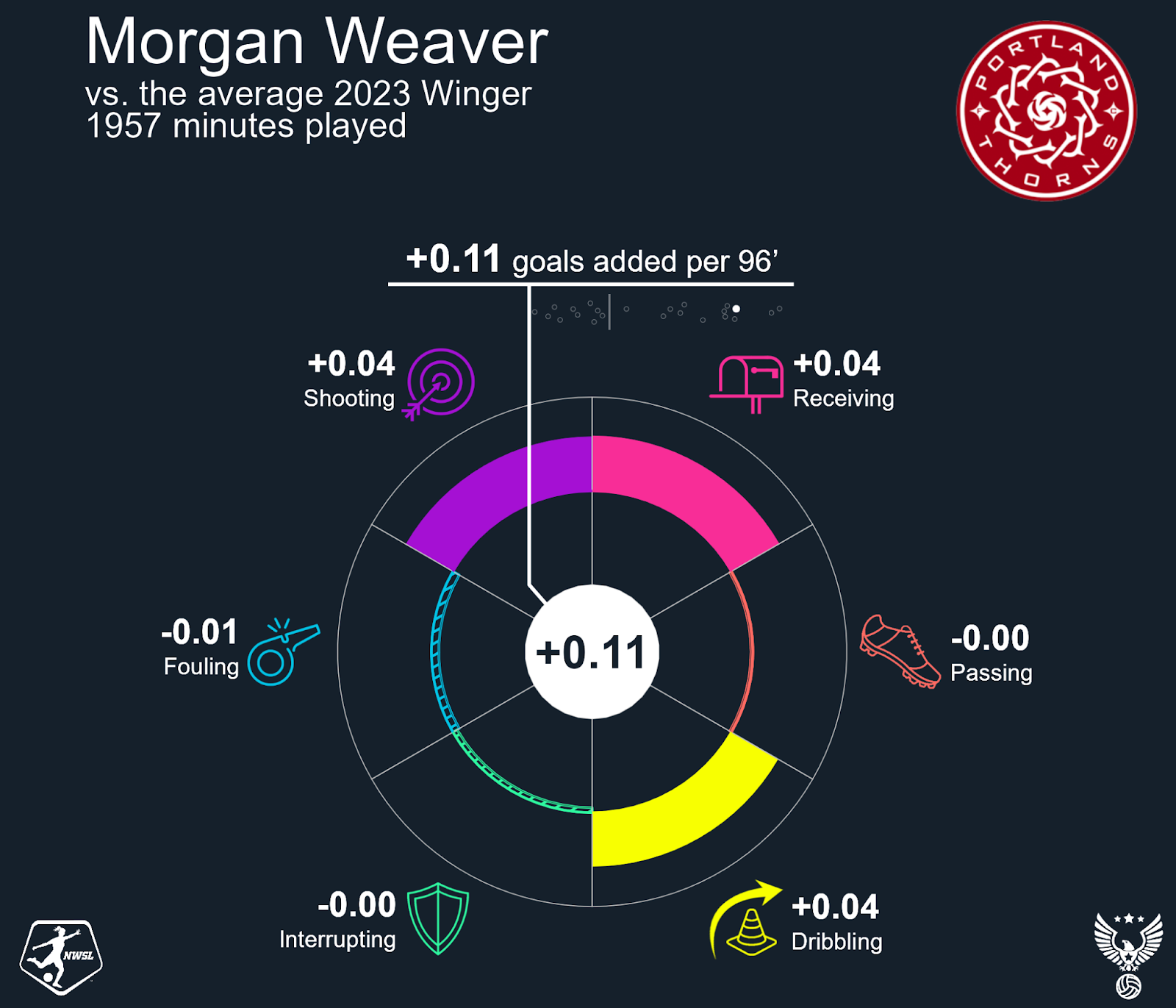
And if we’re talking about Smith, we have to talk about her partner in crime, Morgan Weaver. Weaver quietly scored seven goals in 2023 – the second season in a row where she put up those numbers – and added another three assists. She was the sixth-best forward in the league by goals added last year (0.11 g+/96’, 1000+ minutes), but notched the third-best shooting goals added (0.4/96’), only behind Smith and NJ/NY Gotham FC’s Lynn Williams.
Altogether, there’s just no chance this team doesn’t make the playoffs in 2024. It’s true that their midfielders and forward line might be dragging the goalkeepers and defenders there kicking and screaming, but at least they’ll get there.



